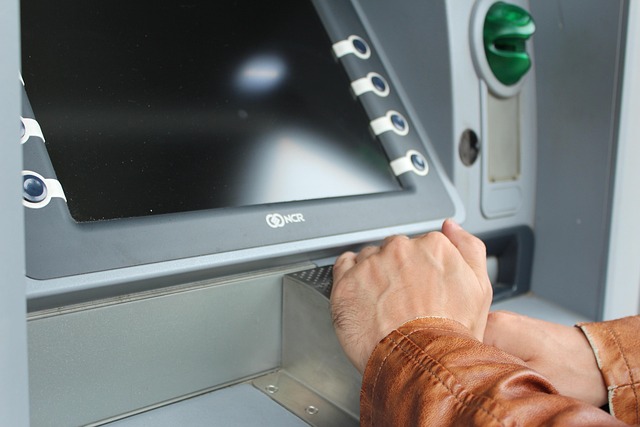The evolution of title loan payments has shifted from traditional in-store transactions to digital platforms, driven by financial industry digital transformation. While online banking and remote management offer enhanced convenience and flexible payment schedules, security concerns and limited hours remain drawbacks for in-store title loan payments. Despite competition from digital financial services, many still prefer in-store interactions during complex financial decisions, but the market share of conventional car title loans is declining due to the increasing popularity of online alternatives.
In an era dominated by digital financial services, the relevance of traditional in-store title loan payments is worth examining. Once a common practice, these transactions have seen a significant shift towards online platforms due to convenience and accessibility. However, some still favor the personal touch of in-store payments. This article explores the evolution of title loan processes, weighing the advantages and disadvantages of physical locations against modern digital alternatives. We delve into how innovative payment methods are challenging the traditional in-store model, leaving us to question: Are in-store title loan payments still relevant today?
- Evolution of Title Loan Payments: From In-Store to Digital
- Advantages and Disadvantages of In-Store Payments in the Modern Era
- Alternative Payment Methods: Challenging the Relevance of In-Store Title Loans
Evolution of Title Loan Payments: From In-Store to Digital

The evolution of title loan payments has mirrored the broader financial industry’s shift from traditional to digital platforms. In the past, in-store payments for title loans were the norm, offering borrowers a straightforward and often quick way to access cash using their vehicle titles as collateral. These physical locations served as hubs where individuals could secure short-term funding without extensive documentation or credit checks.
However, with the advent of digital technologies, the landscape has transformed dramatically. Today, many title loan providers offer online applications and digital platforms for borrowing against vehicle collateral, known as title pawn services. This shift not only provides borrowers with convenience but also allows for more flexible payments. Digital platforms often facilitate personalized loan terms, including flexible payment schedules, making it easier for borrowers to manage their debt and potentially avoid the hassle of in-store visits.
Advantages and Disadvantages of In-Store Payments in the Modern Era

In today’s digital age, where online transactions dominate financial services, one might question the relevance of traditional in-store payments for short-term lending options like title loans. Despite the surge in electronic banking and cashless deals, there are still compelling advantages to considering in-store payments for these specific financial products. For instance, convenience plays a significant role; individuals who opt for in-store transactions can complete their loan process swiftly without the need for extensive paperwork or online applications. This rapid service is particularly attractive for those facing urgent financial crises and requiring quick access to cash.
However, this method also has its drawbacks. In-store payments may not offer the same level of security and privacy as digital platforms, leaving some customers hesitant. Moreover, physical locations have more limited operating hours compared to their online counterparts, potentially restricting accessibility for individuals with non-traditional work schedules or those in remote areas. With the option of a cash advance readily available, some might prefer the flexibility of managing their loan terms remotely, without stepping into a physical branch. Nonetheless, for many, the personal interaction and immediate support provided by in-store payments still hold value, especially when navigating complex financial decisions.
Alternative Payment Methods: Challenging the Relevance of In-Store Title Loans

The traditional method of securing loans through title loan in-store payments has faced significant challenges from emerging alternative payment options. With the rise of digital financial services, borrowers now have a plethora of choices beyond brick-and-mortar stores. Online lenders and peer-to-peer borrowing platforms offer convenient and accessible solutions, allowing individuals to apply for loans from the comfort of their homes. These digital methods often provide faster approval times, competitive interest rates, and flexible repayment terms, making them increasingly popular among borrowers.
The convenience and speed of alternative payment methods have directly impacted the relevance of in-store title loan payments. Many people now prefer the ease of online transactions, mobile apps, and automated payment systems. Additionally, the ability to leverage vehicle equity through digital platforms offers a more transparent and efficient way to access funds, further eroding the traditional in-store loan model’s market share. As consumers become more accustomed to these modern borrowing options, the demand for conventional car title loans and their associated in-store payments is likely to continue declining.
In an era dominated by digital transactions, the relevance of traditional in-store title loan payments is a subject of debate. While convenience and accessibility remain key factors for some borrowers, the rise of secure, online payment methods has significantly shifted consumer preferences. Despite this evolution, in-store title loan payments still hold value, offering immediate gratification and a personal touch, especially for those with limited digital access. However, as lenders explore innovative solutions like peer-to-peer lending platforms and blockchain technology, the future of in-store transactions may become less prevalent, reshaping the landscape of title loan services.






